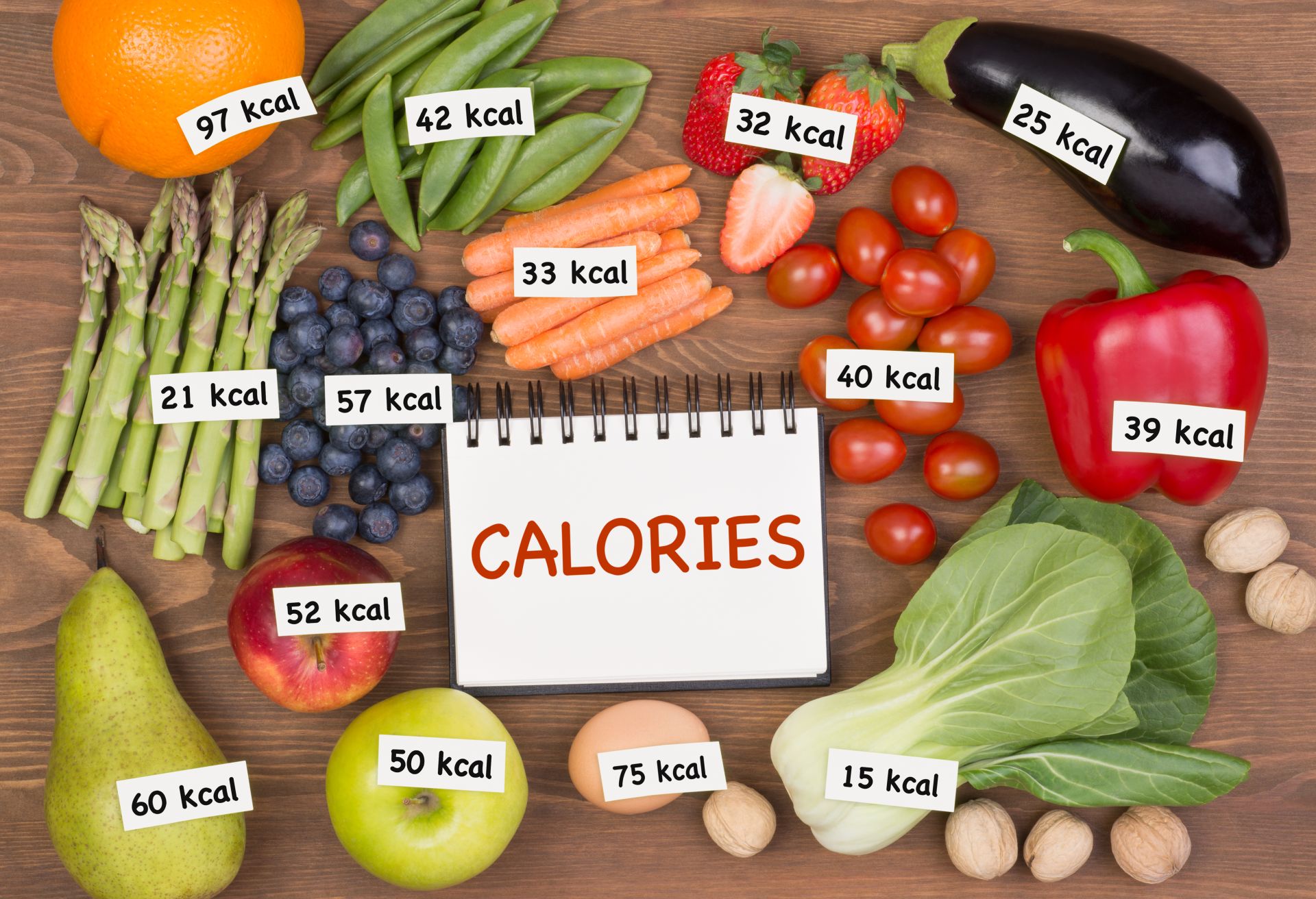Calories - to count or not to count?

Many people wonder whether it is worth it to meticulously count calories when the goal is to reduce body fat or even build muscle mass. Among people who engage in sports recreationally, you will find a large number of people who follow calorie-restricted diets and exercise and monitor the number of calories burned mainly to lose weight or maintain a slim figure. So let's find out if counting calories delivered and expended is really necessary when you want to reduce or maintain a healthy body weight.
- What is an energy balance?
- Why is it so important to know your daily caloric requirements?
- What is needed to count caloric requirements?
- How to count caloric requirements - PPM?
- How to calculate the caloric requirement - CPM?
What is an energy balance?
Energy balance is defined as the difference between the amount of calories supplied to the body with the diet and the amount of calories expended by the body normally during the day. Energy balance occurs when the amount of calories supplied to the body with food is equal to the amount of calories expended, and in this situation body weight does not change. Any disruption of the energy balance leads to changes in body weight and composition. When dietary caloric intake is greater than the amount of calories expended, the energy balance is positive and results in an increase in body weight. Negative energy balance, on the other hand, leads to a reduction in body weight and occurs when the caloric intake with food is less than the total daily energy requirements (known as a caloric deficit), or is in line with daily requirements, but energy expenditure is increased. This is one of the main reasons for counting calories in order to achieve your desired figure goal.
Why is it so important to know your daily caloric requirements?
Adequate caloric supply in the diet is an absolutely key factor in human nutrition, as it determines the achievement of the set figure goal and very much affects the psychophysical performance of the body. In fact, all people who want to lose weight, maintain a slim figure or increase muscle mass, or even improve sports performance should know their total daily caloric requirements. Knowing the total daily energy requirements and counting the calories consumed, or following a diet with appropriately adjusted calories, undoubtedly helps achieve satisfactory results in terms of weight loss and muscle mass development, as well as improving the body's performance capabilities and post-workout recovery. In addition, it is worth knowing that long-term positive caloric balance contributes not only to the development of overweight and obesity, but also to comorbidities, including type 2 diabetes, cardiovascular diseases and cancer. And chronic negative energy balance can result in malnutrition and a number of negative health consequences, including: loss of muscle mass, weakened muscle strength and psychomotor performance, impaired immunity, impaired water and electrolyte balance, and impaired wound healing.
What is needed to count caloric requirements?
In order to estimate daily caloric requirements, it is necessary to know age, gender, height, body weight, level of physical activity (both spontaneous and scheduled leisure time) and, possibly, lean body mass. Having information on lean body mass and/or body fat percentage allows the most accurate calculation of daily energy requirements. The best way to obtain this information is to perform a body composition assessment by DEXA (dual energy X-ray absorptiometry) or BIA (electrical bioimpedance). Body composition testing using the DEXA method is more difficult to access and generally much more expensive, although it provides the most reliable results.

How to count caloric requirements - PPM?
If lean body mass is known, you can use the formula** **Cunningham, which is as follows:
500 + (22 x BMC* [kg])
*BMC means lean body mass expressed in kilograms.
For example, if a person has 65 kg of lean body mass, their basal metabolic rate (PPM) is 1930 kcal.
In contrast, if lean body mass is not known, it is useful to use the Harris and Benedict formula as modified by Roz and Shizgal in 1984, which is as follows:
for women: 447.593 + [9.247 x M(kg)] + [3.098 x W(cm)] - [4.33 x L(years)].
For men: 88,362 + [13,397 x M(kg)] + [4,799 x W(cm)] - [5,677 x L(years)].
Abbreviations:
M - total body weight expressed in kg,
W - height expressed in cm,
L - age expressed in years.
Example PPM calculations:
for a woman aged 36, height 165 cm and weight 64 kg, PPM is 447.593 + [9.247 x 64] + [3.098 x 165] - [4.33 x 36] = 1395 kcal
for a man aged 34, height 182 cm and body weight 88 kg PPM is 88.362 + [13.397 x 88] + [4.799 x 182] - [5.677 x 34] = 1948 kcal
How to calculate the caloric requirement - CPM?
The above two formulas allow you to calculate your basal metabolic rate (PPM), which is necessary for estimating your total daily energy expenditure, otherwise known as total metabolic rate (CPM). To calculate CPM, the Physical Activity Ratio (PAL) is most often used, which takes into account the amount of time spent on both spontaneous and scheduled physical activity.
-
1.2 - no physical activity (e.g., a patient who mainly lies in bed).
-
1.25 - moderate-intensity physical activity of up to 140 minutes or high-intensity physical activity of up to 100 minutes per week (e.g., an office worker whose activity is exclusively related to household duties).
-
1.5 - physical activity of moderate intensity up to 280 minutes or high intensity up to 200 minutes (e.g., an office worker who trains intensively at the gym 3 times a week for at least an hour).
-
1.75 - physical activity of moderate intensity up to 420 minutes or high intensity up to 300 minutes per week (e.g., an office worker who trains intensively in volleyball 4 times a week for at least an hour).
-
2.0 - moderate-intensity physical activity of up to 560 minutes or high-intensity physical activity of up to 400 minutes per week (e.g., a competitive or amateur athlete who trains intensively at least 6 hours per week, or a construction worker who does hard physical labor).
For example, if a woman has an office job and attends a spinning class 3 times a week for an hour, her physical activity factor is 1.5. To calculate CPM, use the PPM calculated earlier, which is 1395 kcal, and multiply by PAL - 1.5. The total daily caloric requirement for our example woman is just under 2100 kcal.
Sources:
-
Thomas DT, Erdman KA, Burke LM. American College of Sports Medicine Joint Position Statement. Nutrition and Athletic Performance. Med Sci Sports Exerc. 2016. 48(3): 543-568.
-
Hall KD, Schoeller DA, Brown AW: Reducing Calories to Lose Weight. JAMA. 2018 Jun 12;319(22):2336-2337.
-
Lucan SC, DiNicolantonio JJ.: How calorie-focused thinking about obesity and related diseases may mislead and harm public health. An alternative. Public Health Nutr. 2015 Mar;18(4):571-81.
-
Camacho S, Ruppel A.: Is the calorie concept a real solution to the obesity epidemic? Glob Health Action. 2017;10(1):1289650.
-
Fernandes AC, Rieger DK, Proença RPC: Perspective: Public Health Nutrition Policies Should Focus on Healthy Eating, Not on Calorie Counting, Even to Decrease Obesity. Adv Nutr. 2019 Jul 1;10(4):549-556.
-
Benton D, Young HA.: Reducing Calorie Intake May Not Help You Lose Body Weight. Perspect Psychol Sci. 2017 Sep;12(5):703-714.
 ⮜ Previous article
⮜ Previous article
Benefits of using curcumin - what are the effects?
 Next article ⮞
Next article ⮞


